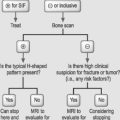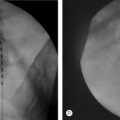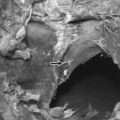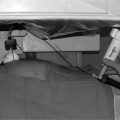CHAPTER 1 Past, Present, and Future of Interventional Physiatry
THE PAST
The development of interventional physiatry represents a model study of how change is reasonably brought about in medical practice. If one reviews the history of the practice of medicine in the United States since Flexner’s report,1 the complex story of organized medicine is found to be the string in the supersaturated sugar solution (the great mix of knowledge, attitudes, and practices) allowing the formation of rock candy (the roles of the various medical and surgical specialties). An approach through organized medical channels is the ‘way’ to get desired changes. Change does not occur quickly, nor particularly smoothly; however, the system seems to work. Perseverance pays. Such has been the case for interventional physiatry.
In its earliest days practitioners of physical medicine often shared an interest in the newly developed area of ionizing radiation. In 1923, the American College of Radiology and Physiotherapy became the first physical medicine society. As radiology established itself as a separate discipline, the organization’s name was changed to drop radiology; however, the first journal was titled the Archives of Physical Therapy, X-ray and Radium. In 1930, the organization became the American Congress of Physical Therapy and in 1945, as the practice of physical therapy became its own discipline, the name changed to the American Congress of Physical Medicine. By 1954, the World War Two-developed team concept of care, espoused by Howard Rusk and George Deaver, caused another name change to Physical Medicine and Rehabilitation. By 1967, the ‘team concept of rehabilitation’ devotees were of sufficient number to cause the name to change to the American Congress of Rehabilitation Medicine. Their journal became the Archives of Physical Medicine and Rehabilitation. Upon action from an AMA advisory council on medical specialties, on June 6, 1947, eleven physiatrists became the first American Board of Physical Medicine with Krusen as its first chairman and Zeiter as vice-chairman. A few physiatrists were ‘grandfathered’ and a total of 103 became the first listed Board Diplomats. In 1949 the board name was changed to the American Board of Physical Medicine and Rehabilitation following the trend towards rehabilitation.
The history of the specialty of Physical Medicine and Rehabilitation is covered in detail elsewhere and should be reviewed for a more complete story.2–6 Elkins, Knapp, Bennett, Bierman, Kovacs, Molander, Coulter, Zeiter, Krusen Ewerhardt and others were among the originators of the field followed by Rusk, Deaver, Johnson, Lehman, Kottke, Stillwell and many more than can be mentioned here. Review will be rewarding to observe how a small group of dedicated physicians gave much volunteer time and attention to the multiple facets necessary for growth of a medical specialty.
One should appreciate that what began as a ‘physical medicine’-oriented body of knowledge transitioned to a medical rehabilitation orientation over time. Physical medicine was never ‘lost;’ it was simply less visible with the overriding mass appeal of rehabilitation as popularized by Rusk.7 New York philanthropist Bernard Baruch played a major role in stimulating development of 12 departments that matriculated nearly 60 early physiatric pioneers. Baruch convinced President Truman of the field’s contribution to the war and postwar effort. The President ordered military medical authorities to embrace the field. Civilian interest followed. Large infusions of federal dollars from the Medicare program followed. During the DeBakey era, heart disease and stroke held the top-tiered research support position. This funding resulted in increased medical rehabilitation demands and funding at a time of virtual nonfunding for musculoskeletal disorders and research. These currents influenced the practitioners and their representatives in the American Academy of Physical Medicine and Rehabilitation. Those physicians with a more physical medicine orientation often complained of inadequate attention and resource sharing in the Academy. In general, the physical medicine oriented physiatrists gravitated towards care of more acute neuro-musculo-skeletal disorders including ever more ubiquitous spine related pain. In the military, the training programs focused on physical medicine, with rehabilitation to occur in the Veterans Administration system. In this setting, and in the growing private musculoskeletal practice setting, the physiatrist saw acute patients and often provided full diagnostic and therapeutic care, referring to other specialties as was appropriate. This conflicted with the rehabilitation model in which practitioners were describing their domain as ‘the third phase of medicine after preventive medicine and acute care.’ In the latter paradigm, the physiatrist did not have access to the patient except upon referral from a physician or surgeon who were the primary practitioners.
In preparation of this chapter, a call was sent to founding PASSOR members to identify the influences upon them to become members. Perhaps the most frequently cited was the desire to become a primary practitioner for musculoskeletal patients. They were influenced by orthopedists such as James Cyriax, Arthur White, John Fromoyer, Malcolm Pope, W.H. Kirkaldy-Willis, and Alf Nachemson and sometimes encouraged to become ‘nonoperative orthopedists’ in lieu of physiatrists. They were also influenced by independent minded physiatrists whose credentials in physical medicine were rich and who were expert in use of modalities and therapeutic exercise, clinical kinesiology, and the newly developing field of electrodiagnostic medicine such as V. Lieberson, Carl Granger, Justus Lehman, Ernest Johnson, Myron Laban, Erwin Gonzalez, Ian MacLean, Joe Honet and others. Henry Betts was identified as a facilitator sympathetic to growth in this arena. Newer generations of PASSOR members were greatly influenced by Jeffrey and Joel Saal and their associate Stan Herring. These physiatrists were often themselves sportsmen whose interests gravitated in this direction. To this group add those physiatrists whose practices included large numbers of injured workmen. Many of these patients suffered spine-related pain disorders. The musculoskeletal physiatrists included also those who followed the work of Janet Travell and Dave Simons in dealing with the clinical entity of myofascial pain syndrome and those whose interests gravitated to arthritis and related disorders. Many of these physicians tended to feel that the Archives of Physical Medicine and Rehabilitation, especially those issues sponsored by the American Congress of Rehabilitation Medicine, did not adequately represent their spine and musculoskeletal interests and did not believe the Archives was well regarded by spine and sports peers in medicine. The policy issues facing the main field of rehabilitation, which were primarily government regulatory-related, were of little concern to the physical medicine practitioner who was not practicing in rehabilitation facilities but was more often office or clinic based. Furthermore, the educational offerings of the Academy were felt to slight the need for both basic and advanced material from the musculoskeletal area, especially spine and sport, and not to pay adequate attention to the office practice needs of these physiatrists. The earliest and common practice model, which continues today, was for the physiatrist to associate with an orthopedist or orthopedic group practice, becoming the member who did not perform surgery, but attended to diagnostics and postoperative care. Government and insurance bodies tended to ‘bundle’ preoperative care, surgery, and limited postoperative care into one standard surgical fee. The surgeon now had a financial incentive to pass on care to another specialist. Furthermoe, additional members in a group practice made investment in practice-owned diagnostic imaging equipment and laboratories inviting and increased the frequency of use of the equipment. As physiatrists became competent in interventional spine procedures, more struck out on their own or became part of single-specialty (physiatric spine medicine) practice groups. Several academic programs became involved. Orthopedists and family practitioners laid claim to sports medicine, although several physiatrists have become professional and school team physicians and are highly regarded for their work. Physiatrists have become increasingly attractive to insurers and re-insurers as the physicians of choice for industrial musculoskeletal injuries and post-trauma soft tissue injuries. These physicians offer thorough history and physical examination, astute diagnostic capabilities, nonsurgical (read less expensive) remediative and rehabilitative care, ability to collaborate when surgery is indicated, and disability evaluation and management all in one place. The capacity to perform electromyography and diagnostic and therapeutic blocks in carefully selected patients was an added benefit.
THE PRESENT
With the urging of LaBan, Honet and Gonzalez, Saal and others, the concept of making this group an official body of the Academy with the ability to raise dues, put on educational offerings, and self-govern became real with the official creation of the Physiatric Association of Spine, Sports and Industrial Rehabilitation (PASSOR) in 1993 with Jeff Saal, MD, as its first president. A three-year probationary period for new councils was defined in the Academy Bylaws. PASSOR Founding members and Charter members are listed in Table 1.1 and Table 1.2. The Founding members in particular all played important roles in getting the organization established, supported the educational programs and special courses as organizers and faculty, took leadership in the definition of a Fellowship curriculum, contributed to definitions for proper billing and procedure codes for this subspecialty, and represented the subspecialty to outside organizations and journals. They also contributed to the writing of the PASSOR Constitution and Bylaws. Worried that feisty PASSOR leaders might lead a movement to ‘jump ship’ from the Academy if their needs were not immediately met, the then Academy president appointed Joe Honet and Dick Materson, former Academy presidents, to an Advisory Board for PASSOR and Myron LaBan as a Board Liaison. Their job was to see that ‘cooler heads’ prevailed and that PASSOR was given good information on the best strategies to assure its needs were met. As an attendee at a majority of the subsequent board meetings, this author will testify as to the maturity, wisdom, professionalism, and dedication of the founding officers and those leaders who have followed to this date.
| Jeffrey A. Saal, MD, Founding Chairman |
| Richard P. Bonfiglio, MD |
| Robert S. Gamburg, MD |
| Steve R. Geiringer, MD |
| Erwin G. Gonzalez, MD |
| Peter A. Grant, MD |
| Andrew J. Haig, MD |
| Stanley A. Herring, MD |
| Gerald P. Keane, MD |
| Francis P. Lagattuta, MD |
| Edward R. Laskowski, MD |
| Joel M. Press, MD |
| Joel S. Saal, MD |
| Curtis W. Slipman, MD |
| Barry S. Smith, MD |
Table 1.2 PASSOR Charter Members
| Terence P. Braden, III, DO |
| Mark Steven Carducci, DO |
| James P. Foydel, MD |
| Michael Fredericson, MD |
| Kenneth W. Gentilezza, MD |
| Michael C. Geraci, Jr., MD |
| Jerel H. Glassman, MPH, DO |
| Richard A. Goldberg, DO |
| Robert S. Gotlin, DO |
| Robert Iskowitz, MD |
| John Keun-Sang Lee, MD |
| Aaron M. Levine, MD |
| Howard I. Levy, MD |
| Donald Liss, MD |
| Howard Liss, MD |
| William James Pesce, DO |
| Bernard M. Portner, MD |
| Stephen R. Ribaudo, MD |
| Robert D. Rondinelli, MD, PhD |
| Sridhar V. Vasudevan, MD |
| John C. Vidoloff, MD |
Subsequent PASSOR presidents (see Table 1.3, PASSOR past presidents) each identified major areas of emphasis for their presidential years. As frequently happens in similar organizations, discussion began to consider lengthening the presidential term to 2 years to allow task completion, as presidents discovered the tasks were great and the time short. (A single-year term prevailed, encouraging presidential efficiency). As PASSOR members demonstrated their ability to plan and conduct highly valued educational offerings for the annual AAPM&R session, they were allocated additional program time and responsibility, evolving towards greater control of all musculoskeletal offerings. Aside from standard lectures and symposia, clinical demonstrations were scheduled and some (such as joint examination) videotaped for future use. Topics were purposefully varied so that sports medicine and industrial medicine topics could be interspersed with those dealing with the spine (which was always highlighted by the Rosenthal Lecture presentation).
Table 1.3 PASSOR Past Presidents
| Jeffrey A. Saal, MD | 1993–1994 |
| Erwin G. Gonzalez, MD | 1994–1995 |
| Joel S. Saal, MD | 1995–1996 |
| Joel M. Press, MD | 1996–1997 |
| Robert E. Windsor, MD | 1997–1998 |
| Andrew J. Cole, MD | 1998–1999 |
| Barry S. Smith, MD | 1999–2000 |
| Gerard A. Malanga, MD | 2000–2001 |
| William F. Micheo, MD | 2001–2002 |
| Bruce E. Becker, MD | 2002–2003 |
Typical of similar organizations, a committee structure was seen as desirable. Committees dealing with Constitution and Bylaws; Nominations and Membership were first, followed by Education and Program, Research, Marketing and Communication, Medical Practice, and Information Systems. Unlike too many other organizational committees, PASSOR members served faithfully and enthusiastically, with appropriate and timely reports requiring careful management of board meetings to remain on course and on time. The presidents rose to the occasion so that motions were acted upon, either being approved, disapproved, or tabled, and with meaningful but limited debate encouraged. This was carried out efficiently and with good humor, with a minimum of bruised egos, which can be a part of such undertakings. A review of the board meeting minutes, minutes of telephone conferences, annual meetings, and reports to members demonstrate a continued thread of progress of important PASSOR business. This was facilitated by outstanding administrative support in the person of Dawn M. Levreau, staff liaison assigned by Academy Executive Director Ronald A. Henrichs, CAE. Ms. Levreau was an Illinois State University graduate with a BS in economics and a minor in Speech Communication who began work at the Academy in April, 1994. Her educational background, and 12 years of experience in association management, made her an invaluable contributor to PASSOR growth. Those who serve in volunteer medical organization roles recognize just how important good staffing is to an organization’s success. Board and Committee and Task Force packets were prepared in orderly fashion, agendas planned, meetings, speakers, meeting and exhibit space planned and carried out with flexibility and positive attitude. The Academy board, other councils, committees, and staff developed a pride in their work with PASSOR and sparked member enthusiasm with benefits. Rarely do members speak up when things go well in organizations; rather, their loud protests are heard if someone is perceived to ‘muck up.’ In PASSOR’s history, praise for leadership and staff assistance has been a constant.
Informally, PASSOR members contributed to the Academy’s cyclic Study Guide sections promulgated through the Academy of PM&R’s Medical Education Committee (MEC). They also contributed to the Resident and Practitioner Self-Assessment materials published by the Academy’s MEC subcommittee on self-assessment (SAE-R and SAE-P). Earlier, some papers authored by PASSOR members were developed and distributed as educational mini-monographs; however, this has been discontinued. PASSOR Educational Guidelines for the Performance of Spinal Injection Procedures was produced and additional education guides are planned. Promulgation of ‘practice guidelines’ was considered and rejected for a myriad of reasons including copyright and legal issues as well as an inability to keep such papers current. Collaboration with the information steering function of the Agency for Health Care Research and Quality (AHRQ – formally the Agency for Health Care Policy Research [AHCPR] of the Department of Health and Human Services) and other organizations such as the American Association of Electrodiagnostic Medicine and The American Academy of Neurology was considered more appropriate for practice guidelines. Several coalitions of spine and musculoskeletal societies developed including the National Association of Spine Societies (NASS), the Council of Spine Societies (COSS), and the Joint Commission on Sports Medicine. PASSOR members regularly contributed in ever increasing numbers to the peer-reviewed medical literature in the Archives of Physical Medicine and Rehabilitation and other journals. After considerable investigation and debate a formal affiliation with and sponsorship of the Clinical Journal of Sports Medicine began with Stuart Weinstein, MD, as Senior Editor. However this affiliation was dropped at the end of the first contract term in 2003. PASSOR paid the subscription price for its members during the contract.
Research was recognized as the key to successful incorporation of this subspecialty into accepted practice. This needed to be evidence-based, primarily clinical, research. PASSOR elected to support the newly reformatted Foundation for Physical Medicine with a significant donation from reserves and personal commitment to a challenge grant by all Board members. PASSOR tightened its criteria for award of the Rosenthal Awardees (Table 1.4 – Rosenthal Lecturers). Recently, the Saal Family Foundation has announced its sponsorship of spine research. A PASSOR Research Grant Award for US$10 000 ‘seed money’ Research Award was created. (See Table 1.5 for awardees and topics.)
Table 1.4 Richard and Hinda Rosenthal Foundation Lecturers
| The Richard and Hinda Rosenthal Foundation Lecture is presented by a young physiatrist who has demonstrated noteworthy advancement in the nonsurgical care of low back pain. This prestigious lectureship was established through the generosity of the Richard and Hinda Rosenthal Foundation. |
| Lecturer | Year | Rosenthal Lecture Title |
|---|---|---|
| Scott F. Nadler, DO | 2003 | Core Strength: What is it all about? |
| Stuart M. Weinstein, MD | 2001 |
Note that Dr. Nadler passed away in December 2004.
Table 1.5 PASSOR Research Grant Recipients
| 2004 | Jay Smith, MD | Electromyographic Activity in the Immobilized Shoulder Girdle Musculature during Ipsilateral and Contralateral Upper Limb Motions |
| 2003 | Julie Lin, MD | Functional Impact of the Posture Training Support in Elderly Osteoporotic Patients |
| 2002 | Michael Fredericson, MD | The Effect of Running on Bone Density and Bone Structure in Elite Athletes |
| 2001 | Heidi Prather, DO | Vertebral Compression Fractures Related to Cancer Patients and Treatment with Vertebroplasty |
| 2000 | Anne I. Zeni, DO PT | Does Athletic Amenorrhea Induce Cardiovascular Changes? |
| 1999 | Gregory E. Lutz, MD | The Biomechanical and Histological Analysis of Intradisc Electrothermal Therapy on Interventional Discs |
| 1998 | Thierry H.M. Dahan, MD | Double blind randomized clinical trial examining the efficacy of modified Bupivacaine suprascapular nerve blocks in the treatment of chronic refractory painful subacromial impingement syndrome |
Organizations Awards highlight PASSOR values. Aside from the Presidential awards, Research Grant Award, and Rosenthal Lectureships, the PASSOR Board created the PASSOR Distinguished Clinician Award to honor members who have achieved distinction on the basis of their outstanding performance in musculoskeletal patient care, their scholarly level of teaching, and who have contributed significantly to the advancement of the specialty through participation in PASSOR activities (see Table 1.6 – Distinguished Clinician Awardees). A Distinguished PASSOR Member Award was also created to honor PASSOR members who have provided invaluable services to the specialty through participation in PASSOR activities (see Table 1.7). These awards were to be directed to members who were not serving on the Board in the three years prior to the award.
Table 1.6 PASSOR Distinguished Clinician Award Recipients
| The PASSOR Distinguished Clinician Award honors PASSOR members who have achieved distinction on the basis of their outstanding performance in musculoskeletal patient care, their scholarly level of teaching, and have contributed significantly to the advancement of the specialty through participation in PASSOR activities. | |
| Robert E. Windsor, MD | 2003 |
| Francis P. Lagattuta, MD | 2002 |
| Paul H. Dreyfuss, MD | 2001 |
| Jeffrey L. Young, MD | 2000 |
Table 1.7 Distinguished PASSOR Member Award Recipients
| PASSOR members who have provided invaluable service to the specialty through participation in PASSOR activities. | |
| Erwin G. Gonzalez, MD | 2002 |
| Jeffrey A. Saal, MD | 2001 |
| Robert E. Windsor, MD | 2000 |
THE FUTURE
This author is in agreement with colleague Bernie Portner, MD,8 who observes, ‘… that much of what is done today is way off mark. There is, in the book on the History of Medicine, a chapter entitled ‘blood letting, the four humors, the hypothymic syndrome and other nonsensical, yet commonly held, tomfoolery of days gone by …’ and then gives his personal opinion of some of today’s practices. Each of us could make a list of those things that we do which may not be adequately supported by evidence-based research, or which appear to have greater physician emollient benefit than good patent outcome. Often, procedures are promulgated with much greater enthusiasm than for which evidence of their long-term success exists. Polls of spines surgeons have indicated that financial incentives alone for doing added procedures, not careful medical individualization, have made laminectomy without fusion relatively rare. We must support and utilize evidence-based medical literature, starting with this textbook, and look for carefully done outcomes research. Despite the requirement for resource constraint considerations and cost–benefit analysis, as a profession we must guard against primarily economic-driven clinical decision-making, or the public will demand diminishment of medical autonomy and substitution of creativity-stifling regulation.
Regarding progress in academia, Curtis Slipman founded the first interdisciplinary academic spine program at the university of Pennsylvania in 1992 at a time when physiatrists were being blocked by anesthesia and orthopedics. His program included direct participation of ortho spine, neurosurg spine, and radiology, and all saw patients in the same facility, and created the first academic interventional physiatric fellowship in 1993. Slipman’s emphasis had also been on developing leaders of interventional physiatry that could go on to develop academic programs with top-notch fellowships. He has been able to place a group of incredibly productive young physiatrists in academic centers. These physiatrists include: Zacharia Isaac at Harvard, Omar el Abd at Harvard, Jason Lipetz at Einstein in NY, Michael dePalma at the Medical College of Virginia, Raj Patel at the University of Rochester, David deDanious at the Medical College of Wisconsin, Russell Gilchrist at the University of Pittsburgh, and Amit Bhargavia at the University of Maryland. The University of Michigan program was founded by Andrew Haig, MD, and emphasized the critical importance of research to this field.
1 Flexner A. Medical education in the United States and Canada: A report to the Carnegie Foundation for the advancement of teaching. Bulletin No 4. New York: Carnegie Foundation for the Advancement of Teaching, 1910.
2 Materson R. Introduction. In: Grabois M, Garrison S, Hart K, Lehmkuhl D, editors. Physical medicine and rehabilitation. The complete approach. Malden, Mass: Blackwell Science; 2000:1-16.
3 Kottke F, Knapp ME. The development of physiatry before 1950. Arch Phys Med Rehab. 1988;69:4-14.
4 Krusen FH. Historical development in physical medicine and rehabilitation during the last forty years. Arch Phys Med Rehab. 1969;50:1-5.
5 Martin GM, Opitz J, editors. The first 50 years: The American Board of Physical Medicine and Rehabilitation. Arch Phys Med Rehab. 1997;78(supp 2):1-68.
6 Opitz J, editor. Fifty years of physiatry; the forging of the chain. Arch Phys Med Rehab. 1988;69:1-3.
7 Rusk HA. A world to care for. New York: Random House, 1972.







